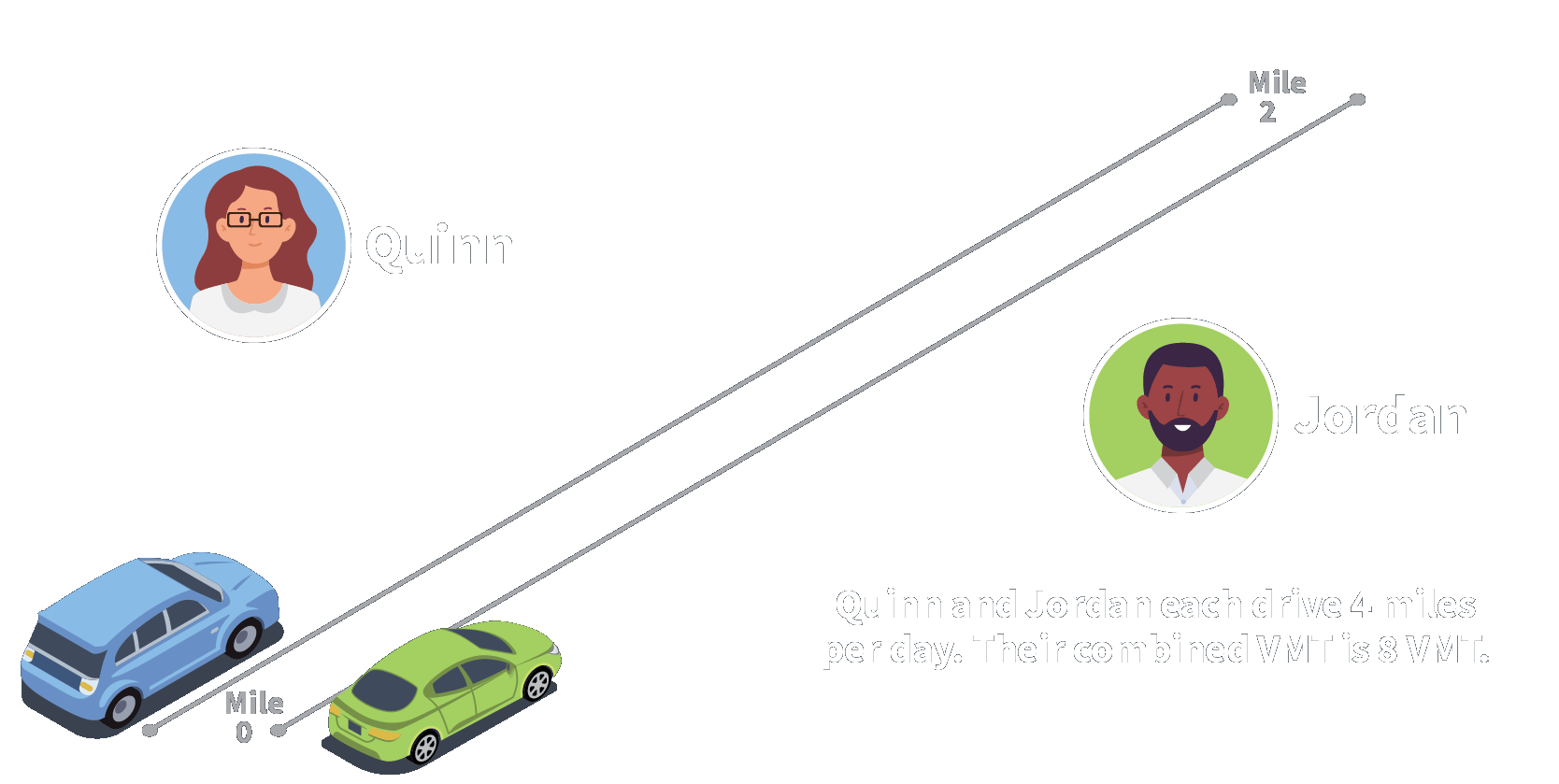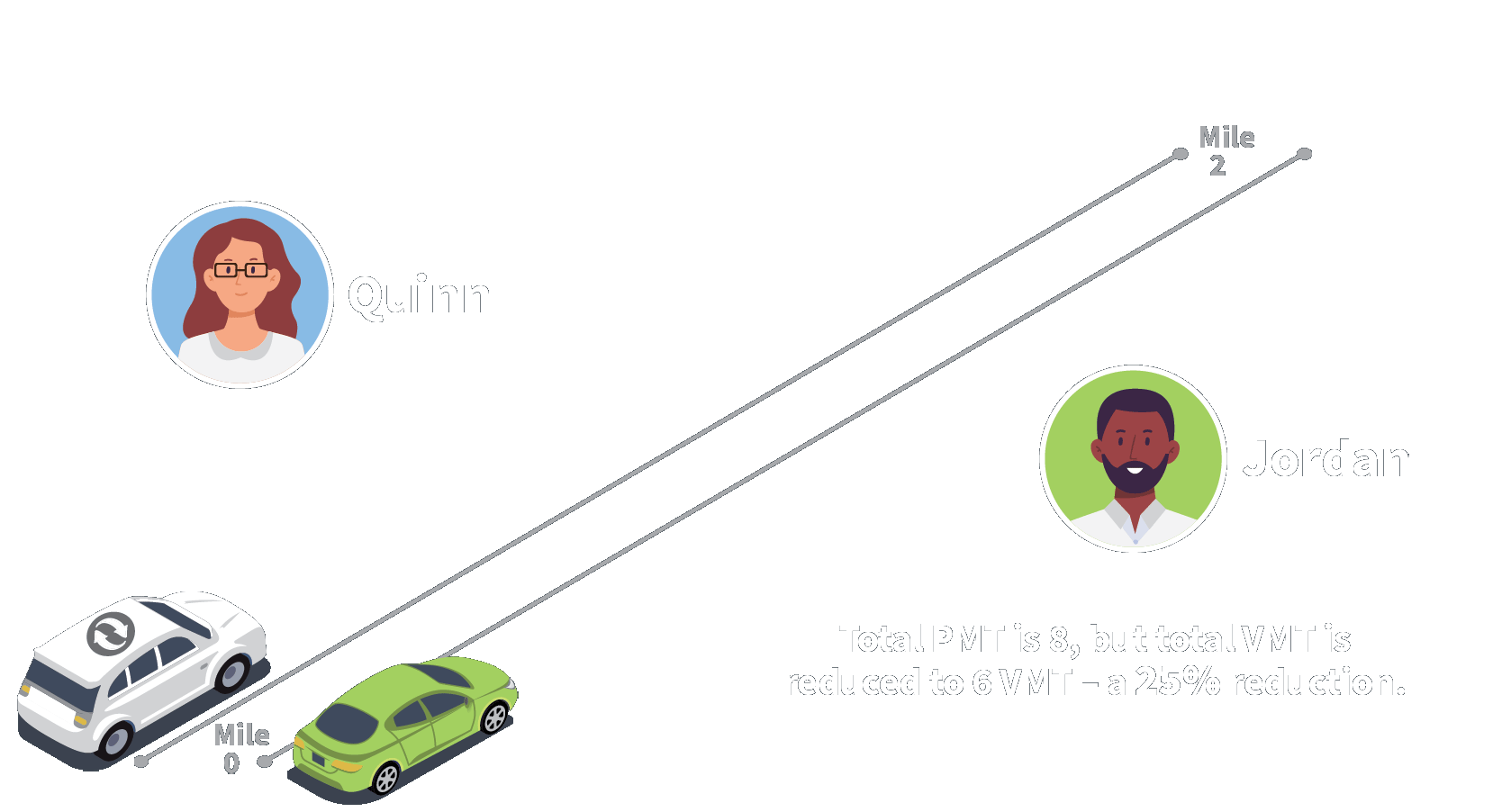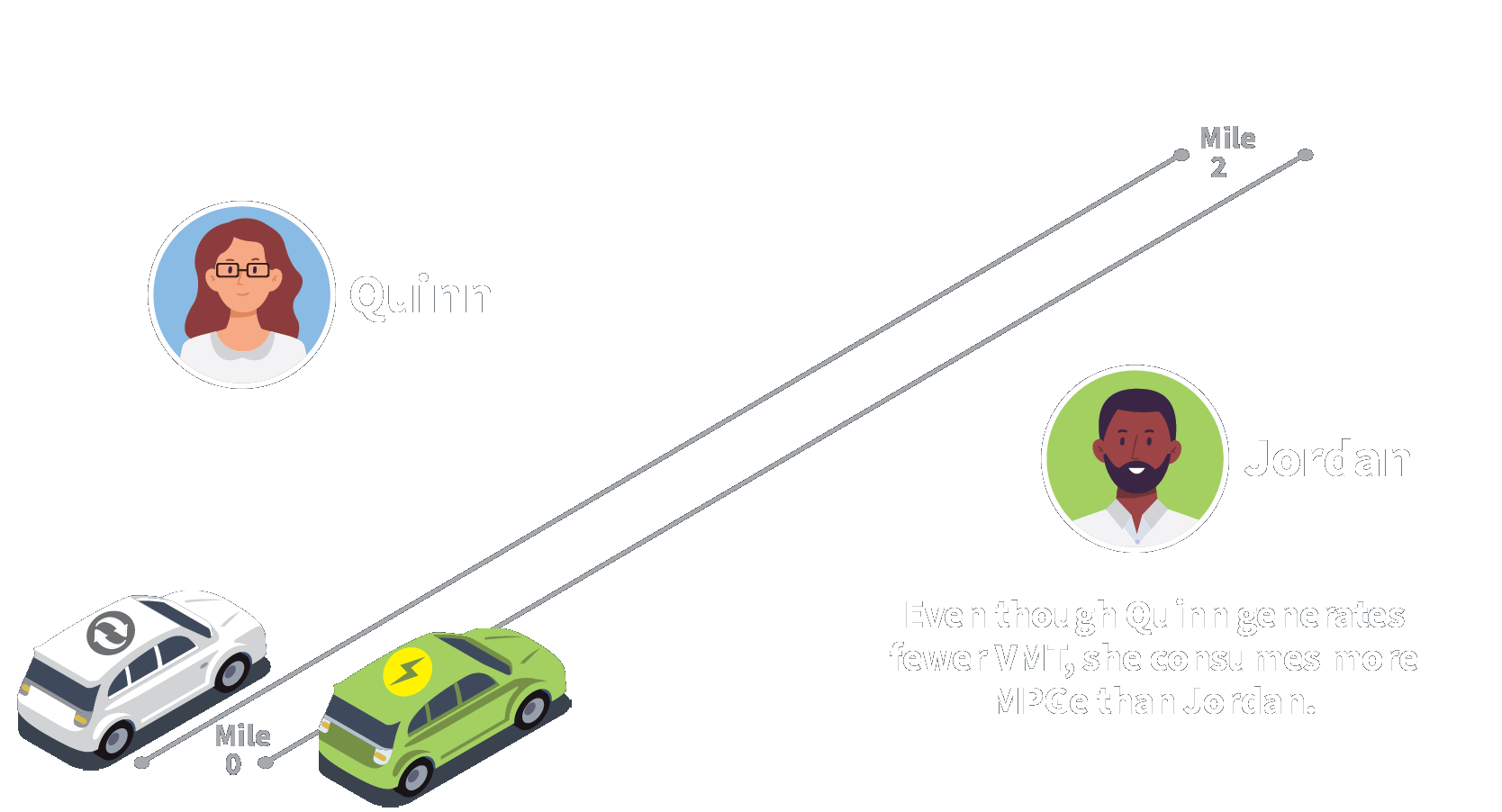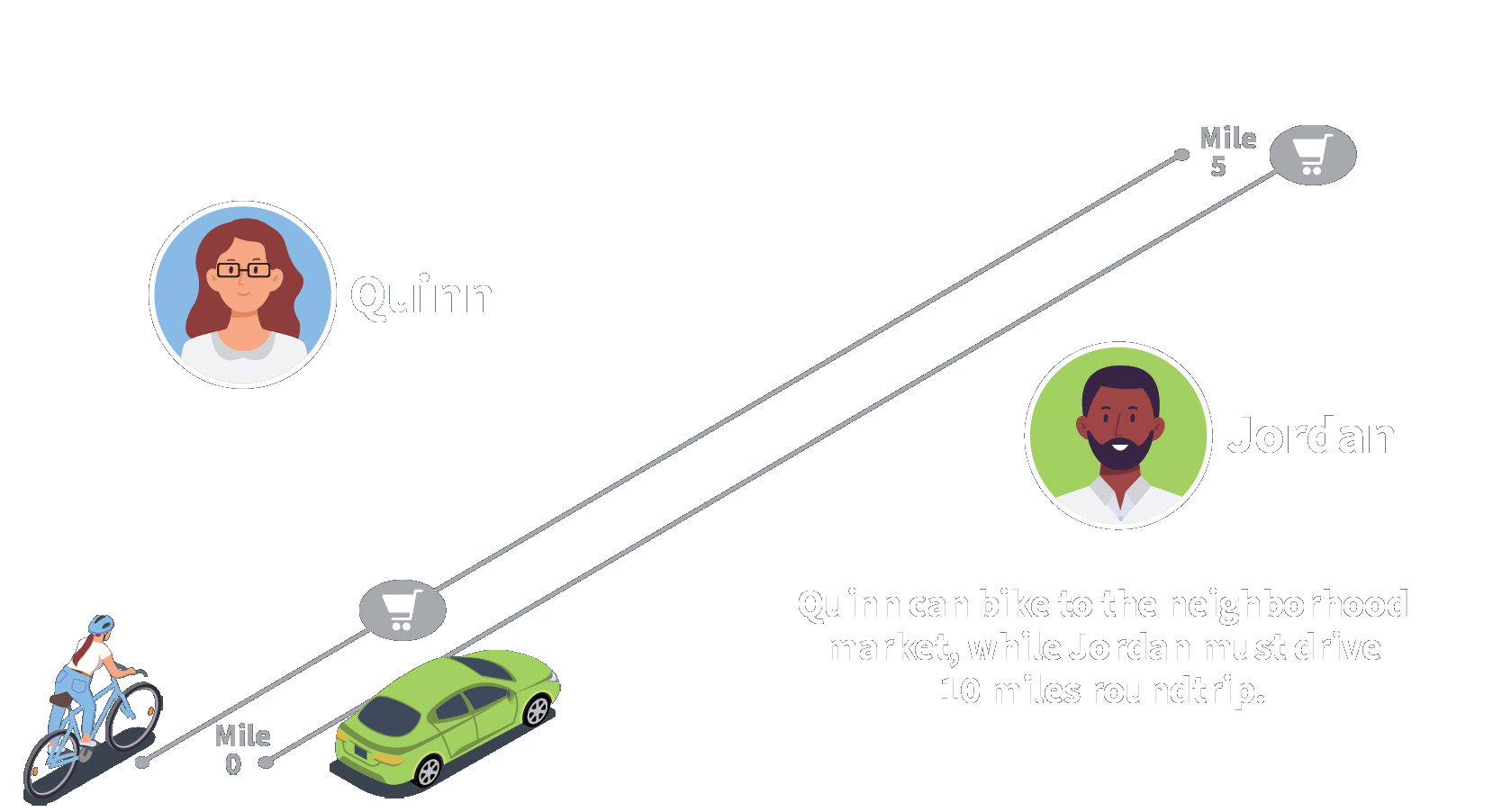How Does VMT Move the Needle on Decarbonization?
Is There More to the Story?
How Does VMT Move the Needle on Decarbonization?
Is There More to the Story?
In our efforts to combat climate change, decarbonization has become the rallying cry to shift us away from burning fossil fuels that release greenhouse gases (GHG) and harmful emissions. In California, the transportation sector generates over half of the greenhouse gas emissions in the state. The California Air Resources Board, through their 2022 Scoping Plan, called for the state to aggressively reduce vehicle emissions by 2045. To achieve this, cities and counties would need to act quickly and partner with transportation agencies to implement these actions. This conversation is not only happening in California but across our country, as seen in the January 2023 release of the national blueprint citing similar goals for reducing GHG emissions to accelerate clean transportation.
Enter VMT. VMT is a metric that measures the number of miles traveled by vehicles and the impact of driving on the environment. Unlike its more-limited predecessor, Level of Service (LOS), which measures the impact of congestion on drivers by measuring travel delays, VMT speaks more to network-wide efficiency and can help describe the environmental consequences of network decisions. While reducing VMT is important for reducing GHG emissions and achieving our decarbonization goals, many local agencies are in the dark about how much VMT reduction is required and how to achieve these reductions without conflicting with other goals such as economic development and equity. We recently helped San Francisco’s Municipal Transportation Agency and the County of San Diego evaluate these difficult questions and are excited to share some lessons learned.
Let’s begin with how total VMT can be calculated:

First, are there bigger questions regarding decarbonization that are worth pursuing beyond simply driving less to reduce emissions? Our R&D groups are in the practice of thinking critically about questions like this. In doing so, we can help clients expand their metrics to offer a more complete perspective of the potential effects of their transportation decisions.
The bottom line is that while the VMT metric is a great indicator of overall destination accessibility and of our reliance on vehicles to move about our communities in our daily routines, it may not necessarily tell the whole story of decarbonization and its relationship to a thriving local economy.
When thinking about ways to reduce VMT, it’s important to consider different types of VMT – not all VMT are equal and not all strategies to reduce VMT work for all kinds.
- Truck VMT versus passenger VMT
- Commute VMT versus Lifestyle VMT (i.e., home-based work versus home-based other)
- “Critical” VMT vs “Discretionary” VMT
Three Areas of Opportunity
When it comes to decarbonization of the transportation sector, there are three key areas of opportunity that stand out to reduce emissions from passenger vehicles. While each has its own set of questions, each demonstrates how the transportation sector can make progress toward reducing and removing carbon emissions.
1. Consider Person Miles Traveled
FAQ: Are policies that seek to reduce VMT going to limit how much people can travel or participate in the economy?
One concern about policies to decarbonize by reducing VMT is that people fear they won’t be able to travel as much as they need. Person miles traveled (PMT) becomes a preferred metric in this scenario as it measures how many miles people are traveling, not just how many miles vehicles are traveling. This better reflects the mode choices that people make and helps to characterize whether the transportation system is moving people efficiently, not just moving vehicles efficiently. It also re-casts decarbonization and getting around in a way that is consistent with a thriving economy. For example, San Francisco measures progress through the percent of trips and miles traveled made by efficient (walk, bike, and transit) and low carbon (electric vehicles) modes to align economic and climate goals.
If Quinn and Jordan travel the same 4 miles a day, but Quinn travels half of those miles in a combustion carshare vehicle, and half on a bikeshare bike:

2. Electrify the Vehicle Fleet
FAQ: Isn’t VMT from an electric vehicle better than VMT from a combustion vehicle?
Analyzing VMT alone doesn’t capture the differences in fuel sources such as gas-burning versus electric. Depending on the size and efficiency of the vehicle, however, the emissions implications might be more than meets the eye. Metrics like miles-per-gallon equivalent or conversion to energy measurements like calories or joules can help capture the benefits of a more efficient fuel source, and they can help refine policies and goals related to fleet mix that can help ensure the most efficient, lowest emissions options are pursued. In converting VMT to GHG for the purposes of environmental review, it is important to note that emissions factor calculations through models like EMFAC already consider a fleet’s fuel mix, the fact that some people are driving zero-emission vehicles (ZEVs) and that some internal combustion engines (ICE) vehicles have better gas mileage than others.
Electric vehicles and ZEVs are also a very important part of the decarbonization puzzle because some trips simply can’t be eliminated or taken by transit, walking, or bike. In San Francisco and San Diego we accounted for a changing fleet mix into our decarbonization strategies and included actions to support building charging infrastructure to help accelerate zero-emissions vehicle uptake.
Let’s say Quinn and Jordan traveled the same as before, but this time Jordan traveled in an EV:

3. Improve Land Use Density
FAQ: How can I avoid generating VMT when I need to get my family to their daily, essential activities?
Planning communities with increased density and a mix of residential land use types can often minimize the need for long-distance travel and allow neighborhoods to support lower carbon travel options. Popular concepts such as the “15-minute city” focus on the idea of creating neighborhoods where essential amenities such as schools, parks, and shopping are conveniently located within a short distance. That way, even if a trip does need to be taken in a vehicle, the total mileage of the trip is shorter. Shorter distance trips are also easier to switch to other modes, allowing the flexibility to walk or bike instead of drive on the days when the traveler has extra time available. Densification and diversification of land uses were among the most powerful strategies in our San Francisco and San Diego case studies.
Travel access, a concept related to the number and type of destinations available by time and mode of travel, offers an equitable way to measure how easy it is for people to get to vital services and recreational spaces. Improving access not only reduces carbon emissions but also enhances residents’ quality of life and promotes sustainable and low-carbon travel choices like walking, cycling, and public transportation.
In this example, Quinn lives in an area with better access to amenities than the area that Jordan lives in which means emissions are nearly eliminated for much of Quinn’s daily activities:

Ultimately, VMT is an extremely important and transformational tool for our industry. In the decarbonization story, however, there’s more to it than simply reducing VMT to reduce emissions. Even in a scenario where aggressive VMT reduction is pursued, some vehicle trips are likely to still be necessary, given the land use patterns that already exist in our communities. Similarly, even with complete adoption of ZEVs leading to elimination of tailpipe emissions, the transportation sector would still generate upstream and downstream emissions to manufacture, maintain, and dispose of vehicles and roadway infrastructure. Communities could still experience conditions such as poor air quality (due to particulate matter from tires and brakes), congestion, and cost of time stuck in traffic, as well as roadway safety concerns.
By exploring these questions and opportunities, we can partner with clients to develop a more comprehensive approach to decarbonizing their transportation sectors that considers the complex relationships between transportation, technology, and the environment. We are also helping jurisdictions evaluate ways to reduce the carbon emissions of our freight networks to support decarbonization goals. Interested? Let’s connect.
To learn more about steps that communities can take as well as lessons learned in two California communities of different sizes and contexts, click below.
- SFMTA’s Climate Roadmap for a Healthier San Francisco
- County of San Diego’s Decarbonization Framework
Contributors

Chelsea Richer
Climate & Resilience Discipline Leader

Matt Goyne
San Francisco Market Leader


